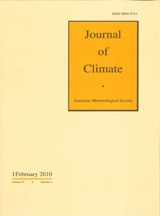Arctic Sea Ice Loss Contributed to Greenland’s Increased Ice Sheet Melting, Study Says
 New CPO-supported research found that decreasing Arctic sea ice has been an important contributor to changes in atmospheric circulation and temperature, both factors promoting Greenland’s surface melt. A report of the study appears in the May 2016 issue of the Journal of Climate.
New CPO-supported research found that decreasing Arctic sea ice has been an important contributor to changes in atmospheric circulation and temperature, both factors promoting Greenland’s surface melt. A report of the study appears in the May 2016 issue of the Journal of Climate.
Reanalysis data used for this study shows Arctic sea ice decrease for all months since 1979, with summer sea ice decreasing 22% and Greenland’s ice sheet surface decreasing 237% compared to 1979. According to the report, these indices for sea ice loss and ice sheet melt suggest a close association between Arctic sea ice variations and Greenland’s ice sheet melt.

Researchers observed high pressures in the troposphere over Greenland, combined with anomalous anticyclonic circulation over the central and south regions, as well as easterly and northeasterly winds in northern Greenland. These shifts in temperature and circulation enhance warm air advection from the ocean into south Greenland and promote additional surface melting, the report states. Further, researchers identified an association between reduced sea ice and increased atmospheric water vapor, which could be contributing to Greenland’s surface melt.
Researchers also used model simulations, implementing climatological and sea ice conditions that confirmed observation-based conclusions about sea ice loss and Greenland’s ice sheet cover melt. Additional simulations suggested the observed associations resulted primarily from sea ice and atmospheric changes over Greenland, as opposed to natural variability.
The report also states that the observed sea ice, atmosphere, and ice sheet relationship should contribute to accelerated global sea level rise and possibly more frequent extreme weather events for the North Atlantic and Europe.
Access the full paper: “Has Arctic Sea Ice Loss Contributed to Increased Surface Melting of the Greenland Ice Sheet?”